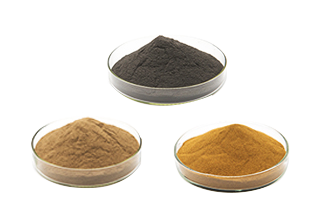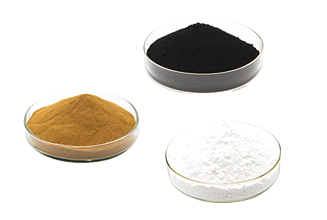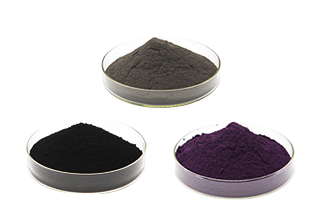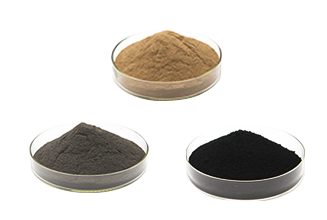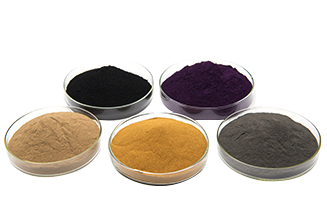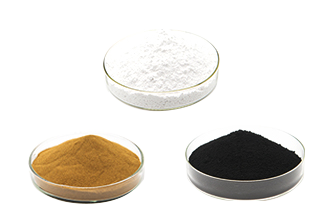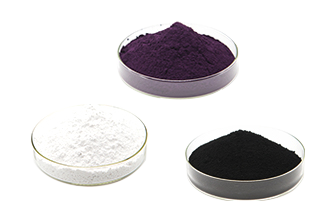Preparation and Application of Boron Nitride (BN) Materials
1. Boron nitride structure
Boron nitride has excellent physical and chemical properties such as wide band gap, high thermal conductivity, and oxidation resistance. The structure of boron nitride is similar to that of graphite. There are two common hybridization methods, sp2 and sp3 hybridization. The sp2 hybridized BN mainly includes hexagonal boron nitride (h-BN) and trigonal boron nitride (r-BN): sp3 hybridized BN mainly includes cubic boron nitride (c-BN) and wurtzite Structure Boron Nitride (w-BN).
2. Properties of Boron Nitride
Although the structure of boron nitride and graphite is similar, compared with graphite, boron nitride also has many excellent physical and chemical properties:
1. High heat resistance, can withstand the high temperature of 2000℃, and will not sublimate until 3000℃.
2. High thermal conductivity, boron nitride has good thermal conductivity and is one of the most thermally conductive materials among many ceramic materials.
3. Excellent dielectric properties, good high-temperature insulation. The resistivity is 104ΩNaN at 25°C and 104ΩNaN at 2000°C. It is the best high-temperature insulating material among ceramic materials. The dielectric constant is 4, which can transmit microwave and infrared rays.
4. Good high temperature stability. In an oxidizing atmosphere, the anti-oxidation temperature can reach 900°C, and when under vacuum, it can reach 2000°C.
5. It has a low thermal expansion coefficient, with an expansion coefficient of 10-6, which is second only to quartz glass. It is a relatively small ceramic material and has excellent thermal shock resistance.
6. Good lubricity and good lubricating performance at high temperature. It is a very good high temperature solid lubricant.
7. It has stable chemical properties, good corrosion resistance, does not react with general inorganic acids, alkalis, or oxidants, and is chemically inert to almost all molten metals. Boron nitride also has a very strong neutron absorption capacity. It can be used as a control rod to absorb neutrons in the reactor, and to make a protective device against neutron radiation.
3. Preparation of Boron Nitride
3.1 Borax-ammonium chloride method
Borax-ammonium chloride method is to prepare boron nitride by mixing anhydrous borax and inorganic porogen ammonium chloride and then heating and reacting in ammonia gas flow. This method can realize continuous production, improve production efficiency, and has low production cost, low investment, and simple process; but due to the incomplete reaction of this method, the content of hexagonal boron nitride is not high, the purity of boron nitride is not high, and the uniformity of particle size is poor. , And other impurities such as C will also be produced, which requires post-processing, which is difficult to meet the experimental requirements, so further research is needed to better synthesis process.
The reaction equation is:
Na2B4O7+2(NH2)2CO→4BN+Na2O+4H2O+2CO2
Na2B4O7+2NH4Cl+2NH3→4BN+2NaCl+7H2O
3.2 Borax-urea method
In this method, borax and urea are recrystallized and purified in advance. After the treatment is completed, the borax is dehydrated, and then the dehydrated borax and urea are mixed in a certain mass ratio, and then nitriding treatment is performed at 900-1100°C1 -2h to obtain coarse-crystalline boron nitride, the crude product is washed with water or acid to neutrality, filtered and dried to obtain a boron nitride sample.
The reaction formula involved in the preparation process is:
Na2B4O7+2(NH2)2CO=4BN+Na2O+4H2O+2CO2
3.3 Borax-melamine method
The borax-melamine method is to mix anhydrous borax powder and melamine uniformly, then press the block on a press and put it into the furnace. When the temperature rises to 400 ℃, the ammonia flow is started, and the temperature is continued to rise in the ammonia gas flow. After keeping the temperature at 1200°C for 9 hours, the reaction product is refined to obtain boron nitride powder with a purity of more than 97%.
The reaction formula of borax and melamine is:
3Na2B4O7+2(NH2CN)3=12BN+3Na2O+6H2O+6C02
3.4 High-frequency plasma method
The high-frequency plasma method uses anhydrous borax and urea as raw materials and uses high-frequency nitrogen plasma heating to obtain high-purity boron nitride after the reaction. The specific steps are as follows: mix anhydrous borax and urea uniformly and press them into a mold under a pressure of tens of megapascals, and then load them into a reaction furnace connected to a plasma generator. The reaction furnace is heated by a nitrogen plasma flame. The temperature in the reaction furnace is about 2000℃, the reaction time is about 2 h. Finally, a boron nitride product with a purity of more than 99% is obtained. This method has higher requirements for reaction equipment.
3.5 Template method
The template method is a method of preparing materials with orderly structure and uniform pore size by taking advantage of the space limitation of the template. According to the different ways of template application, it can be divided into hard template method, soft template method and element replacement method. According to the pore size of boron nitride, microporous boron nitride (pore diameter less than 2 nm), mesoporous boron nitride (pore diameter 2-50 nm) and macroporous boron nitride (pore diameter greater than 50 nm) can be prepared.
The hard template method is a common method for preparing mesoporous boron nitride materials. The porous solid is used as a template, the pores of the boron nitride precursor are impregnated, boron nitride is synthesized by pyrolysis, and then the template is removed to obtain a porous boron nitride material with corresponding pore structure.
The soft template method is the earliest method to prepare ordered mesoporous materials. A supramolecular aggregate composed of an amphiphilic surfactant is used as a template, and the boron nitride precursor and the template are self-assembled through the action of non-covalent bond forces, and then pyrolyzed to obtain a porous boron nitride material.
The element replacement method uses the replacement reaction between boron, nitrogen and carbon templates to obtain porous boron nitride materials under high temperature conditions. The carbon content in the product can be adjusted by controlling the reaction temperature. The higher the reaction temperature, the lower the carbon content. This method is simple to operate, low pollution, but high energy consumption.
4 Application of Boron Nitride
Boron nitride has many excellent characteristics:
(1) The mechanical properties of high hardness. The micro Vickers hardness is about 5000 kg/mm2. It is only the second diamond, so it is the first choice material for super-hard protective coating, and it can also be used as cutting tool material;
(2) Excellent thermal properties, high thermal conductivity and good thermal stability, it is a very good thermal conductivity material and heat-resistant material.
(3) Good chemical inertness, strong oxidation resistance at high temperature (not easy to oxidize below 1300°C, not easy to react with iron group metals and their alloy materials, and can be widely used in precision processing and grinding of steel products. It can also cut heat-resistant steel, titanium alloy and its quenched steel under temperature. Diamond is not suitable for processing iron-containing materials. In addition, it can also be used as an excellent anti-oxidation protective coating;
(4) High spectral transmittance, the spectral width includes infrared region, visible light region to ultraviolet region, plus its own high hardness characteristics, is a good protective coating for optical components, and can also be used as optical window materials, ultraviolet light-emitting diodes ( The light-emitting wavelength can reach 215 nm), which is the first diode light-emitting device to reach the ultraviolet region;
(5) Good semiconductor characteristics. The band gap of cubic boron nitride is 6.4 eV. It can be doped both n-type and p-type. It is an excellent wide band gap material and can be used to manufacture high-temperature, high-power, Anti-radiation electronic devices, while diamond can only be doped into P-type semiconductors;
(6) Excellent electrical properties, with negative electron affinity on the surface, is an excellent field emission material, and can encapsulate cold cathode electronic field emission devices;
(7) Good insulation, chemical stability, can be used as a high-quality insulating layer in other III. Group V compounds such as gallium arsenide (GaAs) and indium phosphide (InP) are used in metal-insulator-semiconductor (MIS, metal. insulator. semiconductor) devices to improve their high-frequency characteristics, and they can also be used as electrical insulating layers to increase a variety of Types of device stability field effect transistors, film capacitors, and insulating layers used as metal-insulated semiconductor structures to tunnel through.
Our company also have the following nitride powders for your choice:
Hafnium nitride (HfN)
Zirconium nitride(ZrN)
Titanium nitride (TiN)
Tantalum Nitride (TaN)
Boron nitride has excellent physical and chemical properties such as wide band gap, high thermal conductivity, and oxidation resistance. The structure of boron nitride is similar to that of graphite. There are two common hybridization methods, sp2 and sp3 hybridization. The sp2 hybridized BN mainly includes hexagonal boron nitride (h-BN) and trigonal boron nitride (r-BN): sp3 hybridized BN mainly includes cubic boron nitride (c-BN) and wurtzite Structure Boron Nitride (w-BN).
2. Properties of Boron Nitride
Although the structure of boron nitride and graphite is similar, compared with graphite, boron nitride also has many excellent physical and chemical properties:
1. High heat resistance, can withstand the high temperature of 2000℃, and will not sublimate until 3000℃.
2. High thermal conductivity, boron nitride has good thermal conductivity and is one of the most thermally conductive materials among many ceramic materials.
3. Excellent dielectric properties, good high-temperature insulation. The resistivity is 104ΩNaN at 25°C and 104ΩNaN at 2000°C. It is the best high-temperature insulating material among ceramic materials. The dielectric constant is 4, which can transmit microwave and infrared rays.
4. Good high temperature stability. In an oxidizing atmosphere, the anti-oxidation temperature can reach 900°C, and when under vacuum, it can reach 2000°C.
5. It has a low thermal expansion coefficient, with an expansion coefficient of 10-6, which is second only to quartz glass. It is a relatively small ceramic material and has excellent thermal shock resistance.
6. Good lubricity and good lubricating performance at high temperature. It is a very good high temperature solid lubricant.
7. It has stable chemical properties, good corrosion resistance, does not react with general inorganic acids, alkalis, or oxidants, and is chemically inert to almost all molten metals. Boron nitride also has a very strong neutron absorption capacity. It can be used as a control rod to absorb neutrons in the reactor, and to make a protective device against neutron radiation.
3. Preparation of Boron Nitride
3.1 Borax-ammonium chloride method
Borax-ammonium chloride method is to prepare boron nitride by mixing anhydrous borax and inorganic porogen ammonium chloride and then heating and reacting in ammonia gas flow. This method can realize continuous production, improve production efficiency, and has low production cost, low investment, and simple process; but due to the incomplete reaction of this method, the content of hexagonal boron nitride is not high, the purity of boron nitride is not high, and the uniformity of particle size is poor. , And other impurities such as C will also be produced, which requires post-processing, which is difficult to meet the experimental requirements, so further research is needed to better synthesis process.
The reaction equation is:
Na2B4O7+2(NH2)2CO→4BN+Na2O+4H2O+2CO2
Na2B4O7+2NH4Cl+2NH3→4BN+2NaCl+7H2O
3.2 Borax-urea method
In this method, borax and urea are recrystallized and purified in advance. After the treatment is completed, the borax is dehydrated, and then the dehydrated borax and urea are mixed in a certain mass ratio, and then nitriding treatment is performed at 900-1100°C1 -2h to obtain coarse-crystalline boron nitride, the crude product is washed with water or acid to neutrality, filtered and dried to obtain a boron nitride sample.
The reaction formula involved in the preparation process is:
Na2B4O7+2(NH2)2CO=4BN+Na2O+4H2O+2CO2
3.3 Borax-melamine method
The borax-melamine method is to mix anhydrous borax powder and melamine uniformly, then press the block on a press and put it into the furnace. When the temperature rises to 400 ℃, the ammonia flow is started, and the temperature is continued to rise in the ammonia gas flow. After keeping the temperature at 1200°C for 9 hours, the reaction product is refined to obtain boron nitride powder with a purity of more than 97%.
The reaction formula of borax and melamine is:
3Na2B4O7+2(NH2CN)3=12BN+3Na2O+6H2O+6C02
3.4 High-frequency plasma method
The high-frequency plasma method uses anhydrous borax and urea as raw materials and uses high-frequency nitrogen plasma heating to obtain high-purity boron nitride after the reaction. The specific steps are as follows: mix anhydrous borax and urea uniformly and press them into a mold under a pressure of tens of megapascals, and then load them into a reaction furnace connected to a plasma generator. The reaction furnace is heated by a nitrogen plasma flame. The temperature in the reaction furnace is about 2000℃, the reaction time is about 2 h. Finally, a boron nitride product with a purity of more than 99% is obtained. This method has higher requirements for reaction equipment.
3.5 Template method
The template method is a method of preparing materials with orderly structure and uniform pore size by taking advantage of the space limitation of the template. According to the different ways of template application, it can be divided into hard template method, soft template method and element replacement method. According to the pore size of boron nitride, microporous boron nitride (pore diameter less than 2 nm), mesoporous boron nitride (pore diameter 2-50 nm) and macroporous boron nitride (pore diameter greater than 50 nm) can be prepared.
The hard template method is a common method for preparing mesoporous boron nitride materials. The porous solid is used as a template, the pores of the boron nitride precursor are impregnated, boron nitride is synthesized by pyrolysis, and then the template is removed to obtain a porous boron nitride material with corresponding pore structure.
The soft template method is the earliest method to prepare ordered mesoporous materials. A supramolecular aggregate composed of an amphiphilic surfactant is used as a template, and the boron nitride precursor and the template are self-assembled through the action of non-covalent bond forces, and then pyrolyzed to obtain a porous boron nitride material.
The element replacement method uses the replacement reaction between boron, nitrogen and carbon templates to obtain porous boron nitride materials under high temperature conditions. The carbon content in the product can be adjusted by controlling the reaction temperature. The higher the reaction temperature, the lower the carbon content. This method is simple to operate, low pollution, but high energy consumption.
4 Application of Boron Nitride
Boron nitride has many excellent characteristics:
(1) The mechanical properties of high hardness. The micro Vickers hardness is about 5000 kg/mm2. It is only the second diamond, so it is the first choice material for super-hard protective coating, and it can also be used as cutting tool material;
(2) Excellent thermal properties, high thermal conductivity and good thermal stability, it is a very good thermal conductivity material and heat-resistant material.
(3) Good chemical inertness, strong oxidation resistance at high temperature (not easy to oxidize below 1300°C, not easy to react with iron group metals and their alloy materials, and can be widely used in precision processing and grinding of steel products. It can also cut heat-resistant steel, titanium alloy and its quenched steel under temperature. Diamond is not suitable for processing iron-containing materials. In addition, it can also be used as an excellent anti-oxidation protective coating;
(4) High spectral transmittance, the spectral width includes infrared region, visible light region to ultraviolet region, plus its own high hardness characteristics, is a good protective coating for optical components, and can also be used as optical window materials, ultraviolet light-emitting diodes ( The light-emitting wavelength can reach 215 nm), which is the first diode light-emitting device to reach the ultraviolet region;
(5) Good semiconductor characteristics. The band gap of cubic boron nitride is 6.4 eV. It can be doped both n-type and p-type. It is an excellent wide band gap material and can be used to manufacture high-temperature, high-power, Anti-radiation electronic devices, while diamond can only be doped into P-type semiconductors;
(6) Excellent electrical properties, with negative electron affinity on the surface, is an excellent field emission material, and can encapsulate cold cathode electronic field emission devices;
(7) Good insulation, chemical stability, can be used as a high-quality insulating layer in other III. Group V compounds such as gallium arsenide (GaAs) and indium phosphide (InP) are used in metal-insulator-semiconductor (MIS, metal. insulator. semiconductor) devices to improve their high-frequency characteristics, and they can also be used as electrical insulating layers to increase a variety of Types of device stability field effect transistors, film capacitors, and insulating layers used as metal-insulated semiconductor structures to tunnel through.
Our company also have the following nitride powders for your choice:
Hafnium nitride (HfN)
Zirconium nitride(ZrN)
Titanium nitride (TiN)
Tantalum Nitride (TaN)
related news
-
.png) Nov 11, 2021Aluminum Matrix Composites Reinforced by Titanium Diboride Particles
Nov 11, 2021Aluminum Matrix Composites Reinforced by Titanium Diboride Particles -
.png) May 26, 2022ZrB2-SiC composites prepared by adding silicon carbide (SiC)
May 26, 2022ZrB2-SiC composites prepared by adding silicon carbide (SiC) -
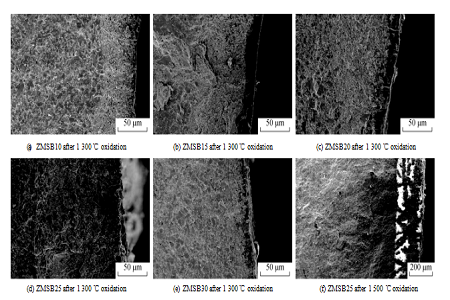 Dec 13, 2021Effect of Mo–Si–B on Sintering Process and Properties of ZrB2 Ultra-high-Temperature Ceramics
Dec 13, 2021Effect of Mo–Si–B on Sintering Process and Properties of ZrB2 Ultra-high-Temperature Ceramics -
(1).png) Oct 08, 2021Ultra-high temperature ceramics help high-speed aircraft withstand the high temperature of 2000 ℃!
Oct 08, 2021Ultra-high temperature ceramics help high-speed aircraft withstand the high temperature of 2000 ℃!

